Low energy gamma detector – RAP47
Test della nuova sonda LEG (low Energy Gamma) Rap47 donata gentilmente da George (GEO Electronics)
RAP47 – Documentazione in formato PDF
![]() LEG_Rap47_ITA
LEG_Rap47_ITA
![]() LEG_Rap47_ENG
LEG_Rap47_ENG
![]() LEG_Rap47_JAP
LEG_Rap47_JAP
![]()
![]() RAP47 –Documentazione editabile in formato ODT – Italiano e Inglese
RAP47 –Documentazione editabile in formato ODT – Italiano e Inglese
Chi conosce bene queste lingue potrebbe aprire i file con Open Office, correggerli e inviarceli. Per le altre lingue potete prendere il file inglese e farlo tradurre da: www.onlinedoctranslator.com/translator.html che è ottimo, velocissimo e rispetta la formattazione.
LEG_Rap47_Documentation_ITA_ENG_JAP
Caratteristiche della sonda RAP47
Tipo CsI (Tl) (Ioduro di Cesio dopato al Tallio)
Dimensioni Diametro 25.4 spessore cristallo 1.0mm
Energie rilevate Gamma da 8 keV a 1 MeV.
Assorbimento tipico 100% a 47keV, 80% a 100 keV
Costruzione della sonda Alluminio anodizzato. Lunghezza 19 cm, diametro 3,8 cm.
Temperatura di funzionamento da -25°C a 40°C
Umidità di funzionamento da 0 a 90%
Peso 178 g
Test Cristallo scintillatore NaI(tl) 24 X 40 mm ex URSS
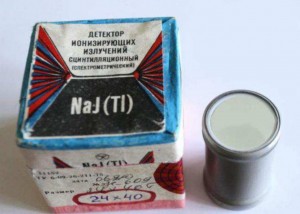
Alessio ha provato questi cristalli e ha scritto un documento con le sue caratteristiche. Le foto illustrano anche bene come montare il cristallo in una sonda finita di aspetto professionale.
Russian_Scinillation_ITA
Russian_Scinillation_ENG
Test Cristallo scintillatore Tungstato di Cadmio (CdWO4)
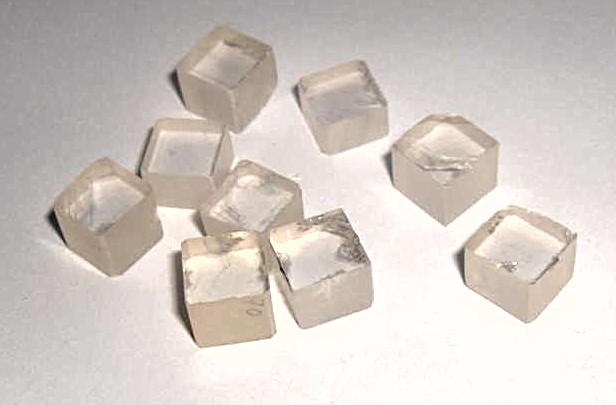
Questo tipo di cristallo è costoso e di difficile reperibilità. Inoltre è piuttosto tossico, a causa del cadmio, e va maneggiato con guanti e mascherina, essendo per di più molto friabile. Nella sonda finita, è sicuro e non igroscopico.
Il Tungstato di Cadmio viene utilizzato principalmente negli ambienti caratterizzati da forte radioattività (> 10^4 Gray), potendola subire a lungo senza danneggiarsi. Ha una densità molto elevata (7.9 gr/cm3) ed una risoluzione inferiore a quella dal NaI(Tl), ma migliore di quello del BGO. La migliore risoluzione ottenibile è circa l’8% (a 662 keV).
L’alta densità di questo cristallo lo rende utile nella realizzazione di sonde di dimensioni tascabili, capaci comunque di rilevare energie piuttosto elevate, anche oltre i 2000 keV. L’output luminoso è centrato sui 475 nm, adatto all’accoppiamento con un fotodiodo.
Il tempo di decadimento è molto lungo rispetto a quello di un cristallo NaI o CsI, fatto che talvolta porta alla necessità di modifiche hardware negli MCA basati sul riconoscimento della forma. Utilizzando il sistema Theremino è comunque possibile utilizzare al meglio anche questo cristallo, come si nota nelle prove allegate.
Gli spettri prodotti dal CdWO4 sono inferiori a quelli del NaI e la resa luminosa è solo un terzo. Ma il CdWO4 può rilevare le alte energie, con un terzo dello spessore del NaI. In pratica si possono risparmiare qualche decina di millimetri sulla lunghezza della sonda. La tabella seguente mostra le caratteristiche di spessore ed energia dei materiali più comuni.
Misurare alte tensioni
Per misurare le alte tensioni i normali tester non vanno bene. A volte le scale dei tester vanno fino a 1000 o 2000 Volt, ma la loro impedenza è troppo bassa.
I tester hanno una impedenza da circa 10 Mega Ohm, che assorbirebbe dall’apparecchio sott misura una potenza esagerata di 100 MilliWatt a 1000 Volt e fino a un quarto di Watt a 1500 Volt. Nessun generatore di alta tensione sensato (a parte quelli usati per le esecuzioni capitali) fornisce potenze del genere. I tubi geiger e le camere a ioni consumano qualche uW (centomila volte di meno) e i tubi fotomoltiplicatori (se cablati bene – con resistori da 10 Mega) stanno intorno ai 5 mW.
Per cui si deve usare una sonda con impedenza molto alta (almeno 100 Mohm, ma meglio se è circa 1 Giga Ohm).
– – – – – – – –
Si possono comprare sonde commerciali ma costano moltissimo…
Non comprate queste sonde, contengono solo qualche resistore e non hanno niente di speciale. Si possono costruire, con meno di un Euro di componenti!
– – – – – – –
…oppure si possono utilizzare complicati schemi con operazionali, diodi di protezione e costosi resistori da 1 giga ohm, come il seguente:
Non fatevi tentare da schemi come questo, necessitano di alimentazione ausiliaria (batteria) e non possono misurare tensioni negative.
Per misurare una alta tensione negativa si potrebbe pensare di invertire i puntali ma si sconsiglia di farlo, non è bello avere la massa del circuito e quindi anche l’operazionale e il trimmer di taratura a tensioni di migliaia di volt.
– – – – – – – – –
Versione semplice con componenti tradizionali
Si consiglia invece di usare un semplice partitore con una serie di resistori da 10 Mega o 33 Mega per un totale da 200 Mohm fino a 800 Mohm e di dividere la tensione per 1000 con un resistore di taratura in parallelo al tester.
I fili rosso e nero vanno al tester, il filo giallo e nero è il riferimento di massa della alta tensione e il filo nero a destra si collega alla alta tensione.
La lunghezza della striscia risultante rende molto affidabile questo adattatore anche in presenza di umidità.
Si consiglia di usare un resistore di taratura da un millesimo della resistenza totale, con in serie un resistore di basso valore, trovato per tentativi. Oppure si potrebbe usare un resistore con in serie un trimmer.
In questa immagine la resistenza totale è 18 x 10 = 180 Mohm e i resistori di taratura sono 180K + 10K
La taratura deve essere fatta sul proprio tester. La resistenza di alcuni tester potrebbe essere inferiore ai soliti 10 Mohm. Meglio però se il tester è esattamente da 10 Mohm, la taratura sarà valida anche per usare l’adattatore con le classiche sonde da 10 Mohm dell’oscilloscopio.
– – – – – – – – –
Theremino Hi Voltage Probe – Versione SMD da 1 Giga
Con 12 resistori SMD, che costano in totale 30 centesimi di Euro, si può costruire una ottima sonda da 1 Giga Ohm. Il vantaggio di questa versione è di poter stare nel contenitore di una penna biro.
Il condensatore da 100nF serve per stabilizzare la misura dei decimi di Volt sul tester, anche con fili di collegamento lunghi e non schermati. Per fare misure di segnali che cambiano nel tempo (con oscilloscopio) questo condensatore diminuisce troppo la banda passante e lo si deve eliminare o scollegare da un lato. Per andare dalla sonda all’oscilloscopio usare un cavo schermato o molto corto.
Sia il tester che l’eventuale oscilloscopio devono avere una impedenza di ingresso (resistenza di ingresso) da 10 Mega Ohm. Questo è normale per tutti gli strumenti attuali ma fate attenzione a non usare tester analogici che non possono funzionare (non si riuscirebbe a tarare la sonda e si avrebbero variazioni cambiando portata sul tester)
Quando si collega un oscilloscopio si deve fare attenzione che la sonda sia impostata su x10. In questo modo la sua impedenza è di 10 Mega Ohm. Se invece si imposta la sonda sulla portata x1 la sua impedenza diventa 1 Mega Ohm e non è più possibile calibrare la sonda HV.
– – – – – – –
Theremino Hi Voltage Probe – Download
In questo file il progetto del PCB in formato Eagle, gli schemi e le immagini di tutte le versioni: Sensor_HvProbe
Ridurre al minimo il rumore del PmtAdapter
Premettiamo che un rumore di alimentatore inferiore a 1 mV pep crea disturbi nella zona di energie inferiore a 2 keV (che nessun sensore riesce a rivelare), e quindi si potrebbe accettarlo senza problemi.
Ma se qualcuno vuole insistere potrebbe trovare qualche soluzione nuova e dare un aiuto sostanziale a tutti i pignoli (come me tra l’altro) che vogliono vedere la linea di base assolutamente piatta e l’analisi con il DAA pulita come nelle immagini seguenti.
I termini del problema
Schema del PmtAdapter – Cliccare l’immagine per ingrandirla.
Sul mosfet e L1 sono presenti impulsi da 1000 Volt, e sul lato destro, nella zona PMT, R8 e R9 e BNC vorremmo averli ridotti sotto ai 10 uV. Perché 10 uV? Perché vorremmo stare sotto ai 300 uV in uscita, dopo T3 e T4, che guadagnano circa 20 volte.
Tra 1000 Volt e 10 uV c’è un rapporto di 100 milioni di volte e siamo in presenza di impulsi con fronti ripidissimi, quindi alte frequenze, che passano anche attraverso capacità minime di millesimi di pF.
A peggiorare le cose la zona di segnale del PMT è necessariamente ad alta impedenza (1 mega ohm) e raccoglie anche i fantasmi, attraverso la minima capacità che esiste attraverso l’aria.
Da dove passa il rumore?
Guardando lo schema si vede che la parte sinistra (alimentatore) e la parte destra (segnale) sono unite solo da quattro strade.
(1) La strada R4, R5, R6: Le due celle da 1 mega + 47 nF sono esagerate e da li non passa niente!
(2) La strada L2 e R14: Anche qui, grazie ai due condensatori da 1000uF e all’induttore da 1mH, il rumore non passa.
(3) I collegamenti di massa: Qui cominciano le preoccupazioni, bastano differenze minime per aumentare i disturbi da 300 uV pep a 1 mV pep
Loop di massa corti e di grande sezione, che tutti giudicherebbero innocui, possono creare addirittura decine di mV di disturbo.
Controllare che il Ground-Loop dei PCB sia stato corretto con un taglio nel punto indicato dalla croce arancione. (cliccare le immagini per ingrandirle)
I primi prototipi, con i PCB artigianali (fatti con la fresa), si comportavano meglio e (in certe condizioni di scatola, masse, scatola chiusa etc..) i disturbi scendevano sotto ai 300 uV pep.
Nei prototipi usavamo BNC isolati e il collegamento di massa alla scatola avveniva accuratamente in un punto solo (attraverso polo GND del jack femmina), inoltre si usavano scatole piccole, appena pochi mm più grandi del PCB e solo un trimmer per l’alta tensione. Quindi praticamente niente fili nella scatola come visibile nella prossima immagine.
Con le scatole grandi, i fili di collegamento del potenziometro esterno e i nuovi pcb fatti a macchina, non si riesce a scendere sotto ai 500 uV pep e nessuno ha ancora trovato una soluzione. Me ne sono fatti spedire quattro e anche io non sono riuscito a togliere le puntine sulle alte frequenze e a scendere sotto ai 500 uV pep.
(4) La minima capacità che aggira lo schermo attraverso l’aria: Qui si possono tentare molte soluzioni, usare un contenitore metallico più piccolo, in modo da diminuire la zona ai lati dello schermo, oppure ingrandire lo schermo.
Da non trascurare anche i due fili di collegamento tra il PCB e il BNC che devono essere corti (meno di 10mm) e devono essere attorcigliati tra loro. Importantissimo anche schiacciarli in basso in modo da avvicinarli alla base di alluminio della scatola.
– – – – – –
Chi volesse tagliare la testa al toro potrebbe tentare una cura esagerata (che consiglio solo ai pignoli e che appena avrò tempo proverò di persona) si tratta di tagliare a metà il PCB e separare totalmente le due metà con uno schermo metallico che dividerebbe totalmente le due metà della scatola.
Il PCB andrebbe diviso esattamente sulla linea dello schermo e si dovrebbero ricollegare R5 e R14 opportunamente
Infine i due fili che vanno all’alimentatore dovrebbero passare in due piccoli buchini sul divisorio.
Si consiglia questa operazione di taglio solo a chi ha molto tempo ed è veramente abile in elettronica. Non ci sono certezze che ne valga la pena, nessuno ha mai provato a farlo, ma molto probabilmente questa soluzione potrebbe eliminare totalmente ogni rumore.
– – – – – –
Chi riuscirà a scovare qualche soluzione semplice ed efficace verrà promosso super-ricerc-mago-dott-prof cacciatore di disturbi e avrà la riconoscenza di tutti noi!
Ridurre la amplificazione del Pmt Adapter
Il Theremino PMT Adapter è stato progettato, per fornire le migliori prestazioni, con i fotomoltiplicatori Hamamatsu R6095. Normalmente gli R6095 e anche altri PMT, con caratteristiche simili, funzionano bene con “Audio gain = 2”, e una tensione intorno ai 600..700 volt.
Alcuni foto moltiplicatori, eventualmente cablati con reti resistive, diverse da quella consigliata (10 mega sui dinodi e 1 mega sull’anodo), possono produrre un segnale di uscita troppo alto.
Questa condizione viene evidenziata dal fatto che si deve tenere “Audio gain” minore di 2 e anche il cursore “Energy trimmer” molto basso.
Un segnale troppo alto, manda in saturazione i due transistor del PmtAdapter, peggiora la linearità nella zona delle alte energie e può, nei casi peggiori, mascherare completamente i segnali, di energia superiore a un certo valore.
La soluzione di base, per ridurre il segnale, è ridurre la tensione di alimentazione, del tubo PMT.
Si legge a volte che i PMT, hanno una tensione di lavoro fissa, ma questo non è vero. Tutti i PMT hanno un campo di regolazione molto ampio e questo serve per regolare il loro guadagno, a seconda delle esigenze.
Abbassare la tensione di alimentazione ha anche il benefico effetto di ridurre il rumore generato dal PmtAdapter e di ridurre i rischi di scariche, nei connettori BNC e nei condensatori.
Se necessario, è possibile ridurre la tensione minima del PmtAdapter, anche sotto i 500 Volt, sostituendo R101 con un resistore di valore più alto (ad esempio 1.8 Mega).
Come soluzione alternativa, si può ridurre il guadagno del PmtAdapter.
Il PmtAdapter ottiene impulsi gaussiani e bipolari, per mezzo di un delicato bilanciamento, dei valori dei suoi componenti. Quindi non basta regolare un solo resistore.
Questa modifica riduce il guadagno alla metà, mantenendo intatte le caratteristiche degli impulsi. Dato che il guadagno è diminuito, si dovrà impostare il parametro “Audio gain = 2”, e regolare nuovamente la tensione sul PMT, in modo da lavorare con il cursore “Energy trimmer”, approssimativamente a metà.

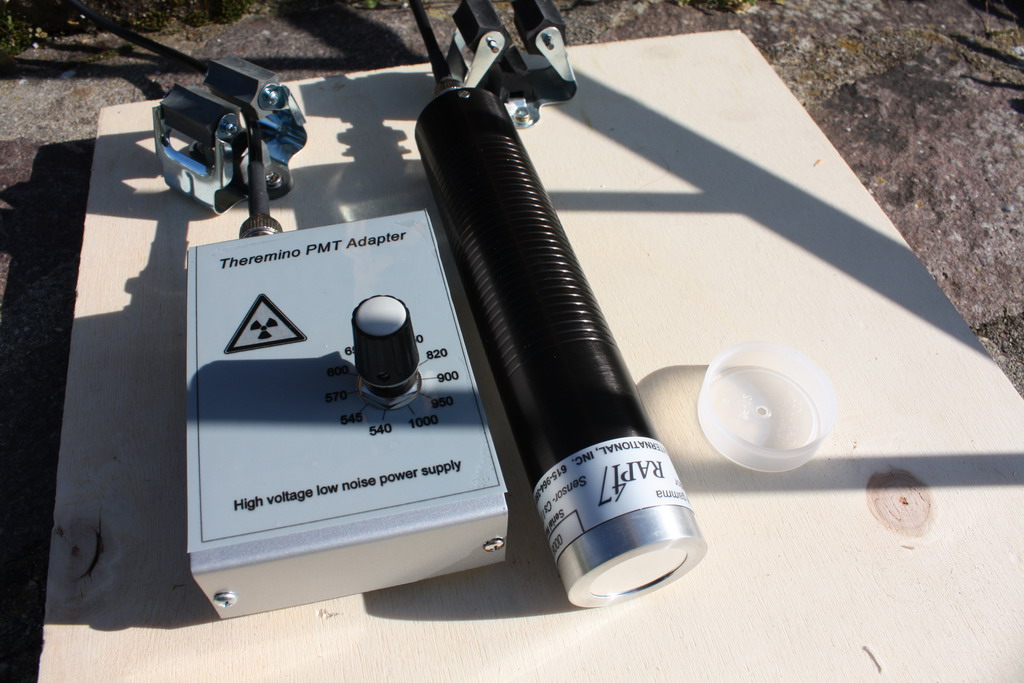
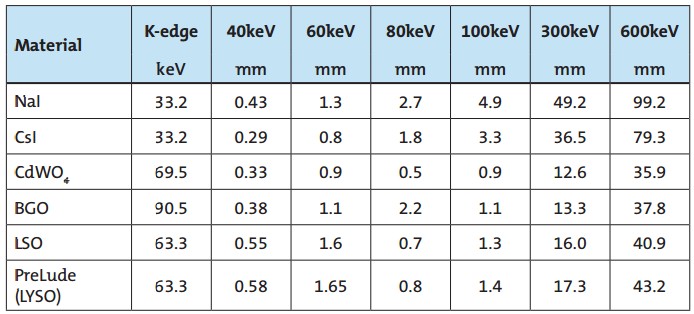
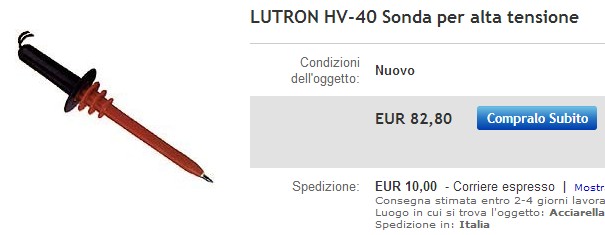

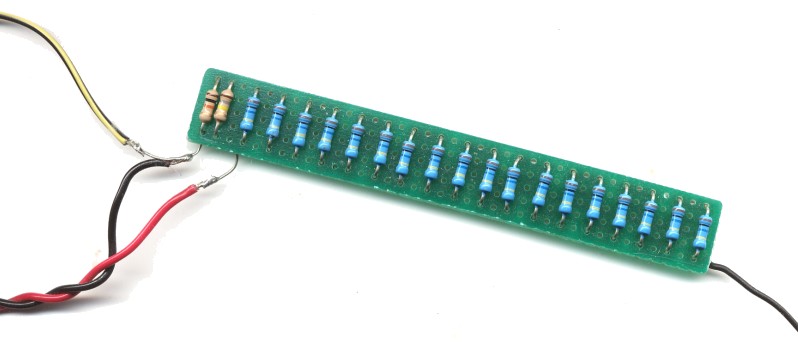
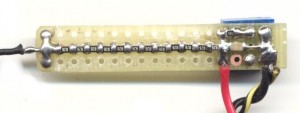

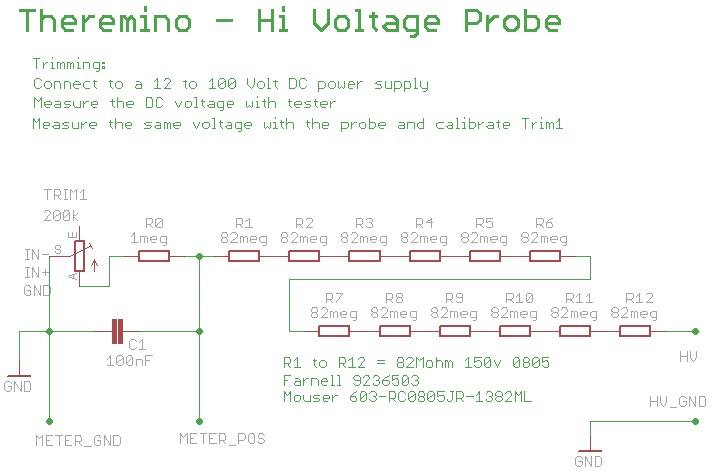
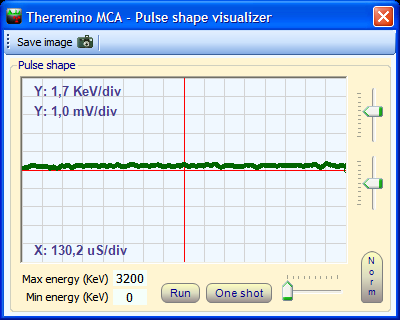
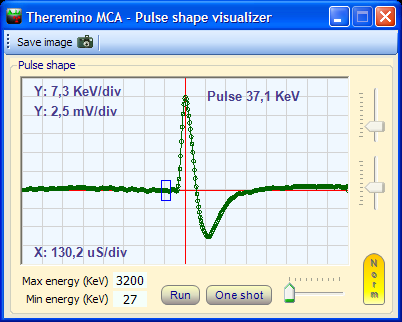
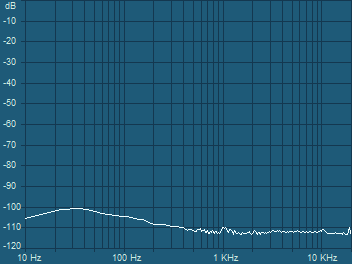
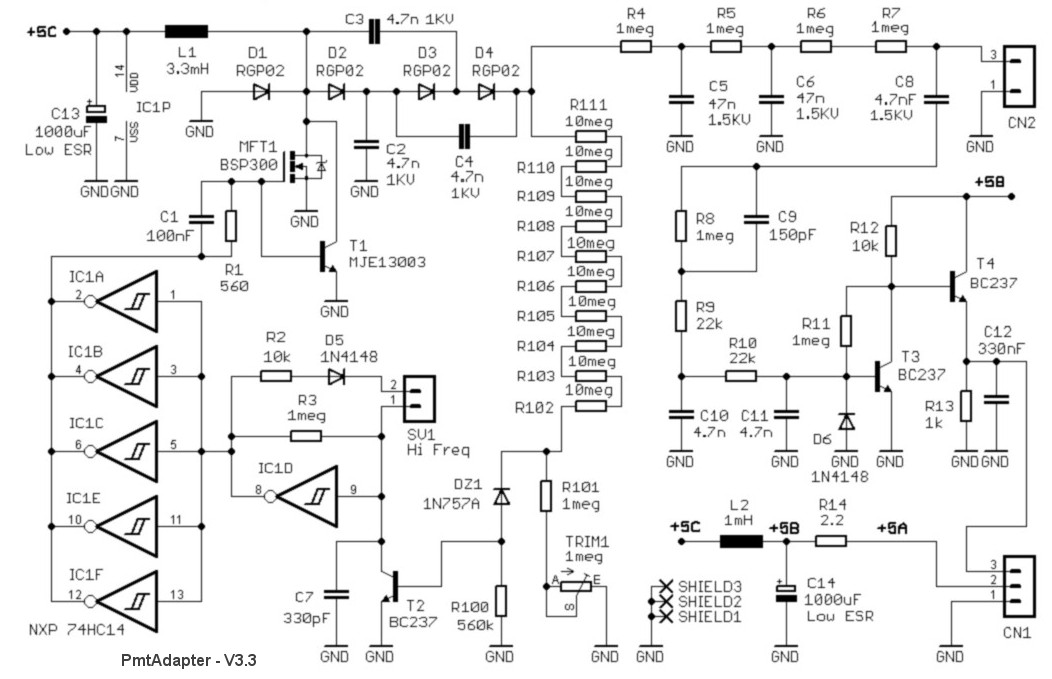
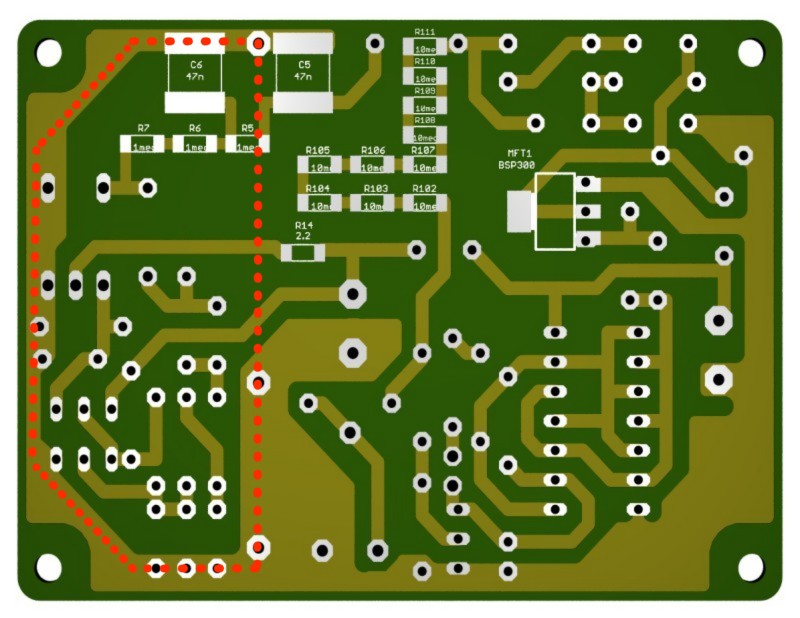
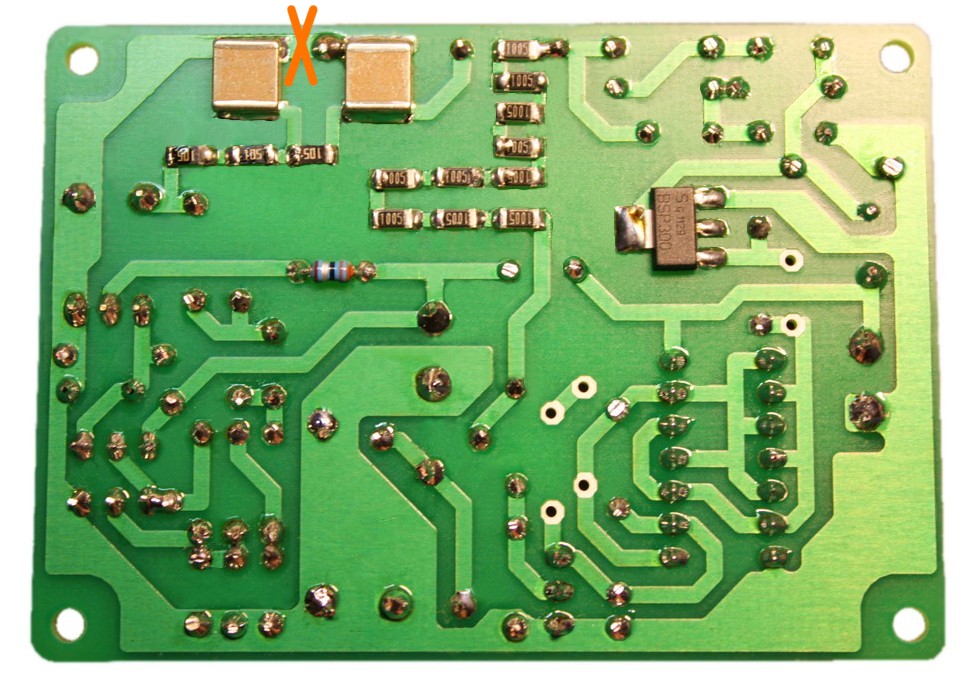
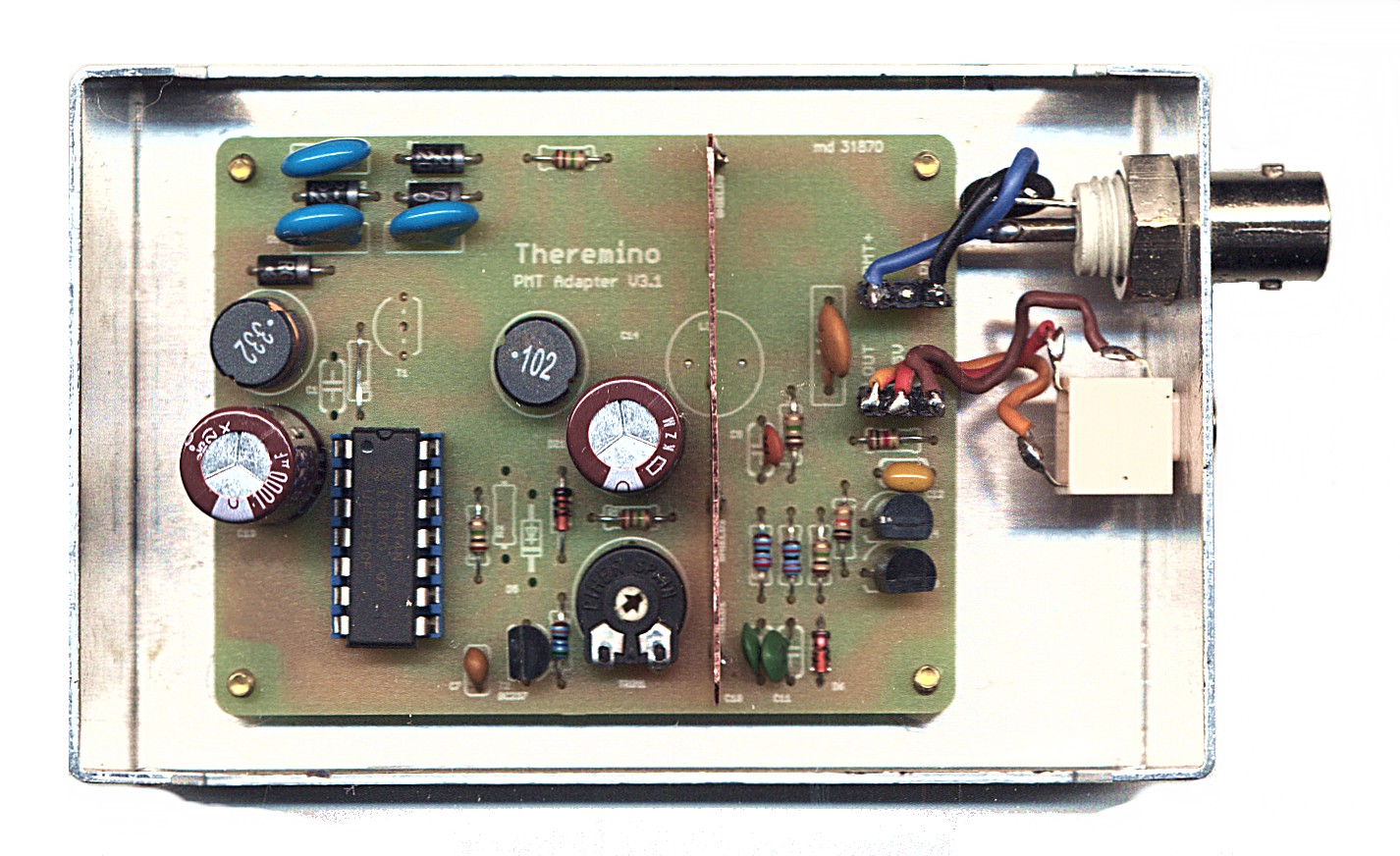
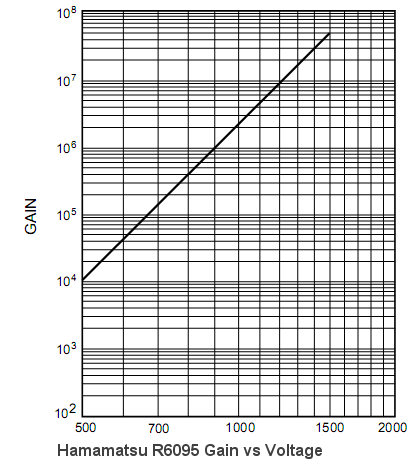
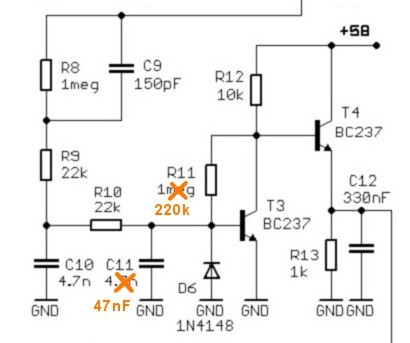
Hello,
I’ve done some testing with Theremino PMT adapter, and I need some advice.
I used the same setting as the LEG_Rap47 document: https://www.theremino.com/wp-content/uploads/2013/03/LEG_Rap47_ENG.pdf
and finding some noise under 30 keV.
It doesn’t bother so much if I cut off below 30kev, or so.
http://pico.dreamhosters.com/ThereminoPmtAdapter.html
I thought it’s because of USB power, and tried 2 different USB hubs. But I got about the same result.
Here is the images of the test results with pulse analyzer showing noise pulse and normal pulse.
I reduced “max noise” to 5 (from 20) and “position” to 50 (from 80), and sometime “size” to 150 (from 300), to get results in tests this page:
http://pico.dreamhosters.com/ThereminoMcaSpectrums.html
What do you think I can do to reduce the noise at very low energy?
(I’ll try another computer that may have better USB power, later.)
I tried different volume level without visible changes.
I’ve put ferrite core on the audio cable without success.
Maybe where I live has too much EMF noise because I have many computers (although wifi and bluetooth are mostly off) or maybe because it’s rather high up (30 to 40m high) and getting radio signals from Digital TV station (2km away) and Cell stations (many of them all around).
If you have suggestion for baseline testing setting, cable or hardware solution (like using more ferrite core, etc) to try out, or any other ideas, please let me know.
Thank you
nkom
Your noise is about 500uV with a center frequency of about 10 kHz
With your settings a 500uV noise has the same height of 2 keV rows so it creates no problems.
But I have seen that you have a strong peak at about 10 keV that is produced by the ringing before the high energy pulses.
In your pulses of 11.3 keV and 11.5 keV you can see that the red vertical line is centered on the ringing that precedes the pulse.
Are you using the our USB cards modified with the internal HiPass filter ?
But the noise is not very high… try also to discover why there is so much ringing.
—————————————————————————
You noise is not produced from computers, wifi or bluetoots, it is completely generated by the audio card connections and ground loops. Ferrite can not correct this. Before all you must discover the noise path.
Try to move connectors, change cables and test:
– the audiocard alone,
– the audiocard + cable,
– the audiocard + cable + pmt adapter,
– the audiocard + cable + pmt adapter + PMT tube
Verify what is producing the noise
Try to make a better shield from the power supply and the preamp…
Do not connect ground wires – too much wires creates ground loops.
Do not use external power supply – only the usb 5V —>> audio card —>> PmtAdapter
—————————————————————————
I suggest to increase “Min. energy” to about 10 or 15 keV
I think that there are not useful rows down 10 keV so this can be a good solution that will correct completely the problem.
Thank you fo suggestions.
The noise (measured with DAA) was like this:
Just sound card = 0.3mvpp 0.59 – 0.73mS
With sound cable = 0.3mVpp 0.59 – 0.71mS
With PMT adapter = 0.4 – 0.5mVpp 0.74 – 0.86mS
With BNC cable = 0.5mVpp 0.76 – 0.86mS
With Rap-47 = Hard to see, but it goes down to 0.5mVpp and then go up (with pulse, I suppose).
I’m not sure if the increse of 0.1 to 0.2mVpp when I connect PMT adapter is more than normal or not.
And there is only very slight increase with BNC cable.
——
I’ve done more testing with different HV setting (from 550kV to about 780kV),
and different sound level (from 2 to 30), as well as, Position, Size, and Max noise setting in the “Base line testing”.
And I could reduce the noise a lot with lower HV (about 650 or less), lower sound level (10 or less), smaller position like 50 (althout I’m not yet sure about this), higher Size of 300 instead of 240, and finally lower Max noise of 10 or less.
(The sound card is connected to USB hub that is powered by PC and without its own AC Adapter)
http://pico.dreamhosters.com/img/ThereminoMCA_2013_05_15_08_32_25-Rap47-BG-noise-correction.png
——
I did more testing with different setting.
It seems I can go down further in Max Noise, and other parameters.
Please see the tests I’ve done. (I did try lots of different setting)
http://pico.dreamhosters.com/ThereminoPmtAdapter.html
Your noise is OK, about 8 keV of amplitude ( 0.2 or 0.3 mV ) is normal and it is impossible to reduce it further.
I suggest to increase the “Min. energy” to about 10 or 15 keV in order to eliminate the noise from the left side of the graph. If not removed this noise can make the other rows disappear.
I have seen many pulses with the red line non in the pulse center – try to regulate the parameters to minimize the number of incorrect pulses.
But, in general your signals are OK, if you can not do better, maybe it is not possible.
A little percentual of “wrong” pulses is not a problem, if they are (for example) 1 every 100 good pulses, then the effect they produces is about invisible.
Good Job Alessio with your PMT adapter and Theremino MCA program !!!!
I test it today , I’m very happy to have a low cost gamma spectrometer !!!
Thank’s
Fabrizio
Thanks Fabrice,
you posted another time the same message, probably because it is not appeared in the page. This is because:
1) The english page is delayed by the translator (the italian page is updated immediately)
2) Messages without mail address are requiring a manual approvation.
Today we have changed the comment publishing rules and we hope that all the comments will appear immediately, also if the mail address is not specified.
Hello Livio , yes I have a little bug with my navigator !!!
I test it on another radioactive source.
Good program MCA !!!
Thank’s
Fabrice
Hello,
I do not know where elso to write a comment on your nice DAA application.
There is no other that useful than this.
Would it be possible to add an menue item to select the input device? It looks like the default one is chosen.
Also I cannot display spectra with Fmax more than 22kHz although input is at 192kHz.
Maybe you can do a revival of the DAA :-)
Regards,
Martin
Hi, Martin,
we have already planned to add a menu to select the input device.
Now we add to the todo list also to test if it is possible to increase the Fmax from 22 KHz to 100 KHz.
But this will require more investigations because probably all the audio cards have an hardware low pass filter at 22 KHz.
I do not know when we could do this, we have so many things to do…
(sorry for my bad english)
Ciao Livio, mi servirebbe una sonda per alta tensione fino a 100kv in continua e 10kv in ac a frequenza da 35khz e purtroppo quella presentata sul sito credo che non vada bene… Puoi darmi un consiglio? Ho visto che costano molto… Grazie.
La sonda che abbiamo progettato contiene una dozzina di resistori da 150 volt, quindi può arrivare a circa 2000 volt.
Se non c’è pericolo di assorbire troppa corrente dal circuito sotto misura (e quindi di falsare le misure) potrebbero bastarti tre giga e quindi tre resistori in serie (da 1 Giga e 10 KV), come questo che costa 4 euro:
https://www.mouser.it/ProductDetail/Ohmite/SM104031007FE?qs=sGAEpiMZZMttmiwpWlqA01XDd2CuKEml
Se non puoi caricare troppo il circuito sotto misura dovresti utilizzare una decina di resistori da 1 giga in serie. Il tutto verrebbe lungo una trentina di centimetri e purtroppo ti costerebbe un bel po’ perché quei resistori costano 3.5 Euro l’uno a prenderne dieci.
Oppure potresti allungare a 100 o 120 resistori il nostro progetto, ci metteresti un bel po’ a saldarli ma sarebbe da circa 10 giga e molto sicuro data la lunghezza totale. Questa versione ti costerebbe abbastanza poco, i resistori SMD di quella serie (da 82 mega) da Mouser, a comprarne cento, costano circa 3.5 centesimi l’uno, quindi spenderesti 3.5 Euro in totale.
https://www.mouser.it/ProductDetail/Yageo/RC0805JR-0782ML?qs=sGAEpiMZZMukHu%252bjC5l7YWsW0TpwfWtXXbYA%2fKhRXRI%3d
Oppure (e l’ho già fatto) potresti costruire un resistore lungo una trentina di centimetri con le stecche antistatiche che contengono gli integrati. Funziona ma devi fare prove con quelli che trovi fino a stabilire la lunghezza e la resistenza che ti vanno meglio. Il problema maggiore è ottenere un collegamento stabile e duraturo con i due reofori terminali. Io usai della gommina nera altamente conduttiva, la avvolsi attorno ai terminali e poi vi avvolsi sopra molte spire di rame nudo per stringere bene. Dopo molti anni funzionavano ancora ma avevano cambiato un po’ di resistenza. Quindi se passa molto tempo (mesi o anni) tra una misura e la seguente, bisognerà ogni volta ri-tararle.
——–
In tutti i casi il lato basso del partitore sarebbe uguale a quello del nostro progetto, ma senza condensatore se vuoi vedere anche le alte frequenze.
Circa le sonde alto voltaggio,
..qualsiasi resistenza ha la propria capacitá di disaccoppiamento espressa in volt che per le smd indipendentemente dal loro valore in Ohm…è bassissima!!!!
Cosa pubblichi? Quache cosa di pericoloso per gli altri e x le strumentazioni?
Molti resistori SMD con il case 0805 o 1206 hanno una capacità di isolamento di 150 0 180 volt, vai a vedere su qualunque catalogo, ad esempio su Mouser. Poi credo che non ti ci voglia molto a moltiplicare per 12 e ottieni circa il 2000 che abbiamo pubblicato.
Hello,
I’ve built two theremino MCA adapters for gamma sepectrometry and they work great when they do, however, at times the noise takes over and they stop showing data – only the tall column of noise. Normally it happens on the same day – as if something external affects them. May be humidity? I cannot figure it out.
I would be happy with any suggestions.
thank you!
Eugene
Hello Livio
Many months ago I find on Theremino page documentation about SiPM type MICROFC-xxx35-SMT with Eagle files for PCB for mounting this module (round platte). Unfortunately, now I can’t find this information.
Can you help me and give link for this information?
About at 40% of this page:
https://www.theremino.com/en/downloads/radioactivity
You find three lines saying:
SIPM – Solid State Photomultipliers
SiPM_ITA.pdf
SiPM_ENG.pdf
Thank you very much for your reply.
I know this project. It is unusefull for me.
I mean about this:
https://kitspace.org/boards/github.com/opengammaproject/microfc-sipm-carrier-board/
and Open Gamma Detector.
Many months ago I find very detailed description of this project, but after laptop data lose I haven’t more detailed information, but I have MICROFC-60035-SMT SiPM detector, PCB’s for it’s mounting and Open Gamma Detector hardware ver. 3.0.
I think, that the projects has been described also on Theremino. If not, excuse me.
Thank you
With best wishes
Andrew
The sensor cost about 50 on Mouser, then you need a NaiTl chrystal, a PCB and appropriate electronics, can you please estimate the total cost ?
I also know that the final sensitivity would be lower and the noise higher than what you get with photomultiplier tubes.
Perhaps the only advantage you might get with these SIPMs is to have a smaller probe. But the size doesn’t seem so important to me if in exchange the measurements lose quality.
Am I doing something wrong in these arguments?
Perhaps similar projects have been described on Physics Open Lab
https://physicsopenlab.org/category/english-posts/